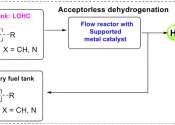3D printing smart clothes with a new liquid metal-alginate ink
In the future, smart clothing might monitor our posture, communicate with smartphones and manage our body temperature. But first, scientists need to find a way to cost-effectively print intricate, flexible and durable circuits ...
Apr 13, 2022
0
148






